Visual content is an essential part of your marketing strategy. You might have the best copy in the world, but if your visuals are lacklustre – or worse, non-existent – your content simply won’t have the impact you’re aiming for.
Visual content is anything that is primarily or exclusively image-based. This includes photographs, drawings, videos, infographics, memes, screenshots, slide decks, diagrams, and more.
I’ve been working in the SEO and content marketing space for more than ten years. In that time, I’ve launched and grown a number of businesses and websites. Through my Digital Marketing Agency, I work with clients in a range of niches to get the results their hard work deserves.
Throughout my years of experience, I’ve learned a few important lessons about visual content and how best to use it to boost performance and grow conversions. Read on, and I’ll share my insights with you.
Lesson 1: People Are Visual Creatures
Visual content is awesome for one main reason: because it works.
According to Social Media Today, 74% of marketers used visual content in at least 70% of their content as of 2019. This was an increase of 10.5% on the previous year:
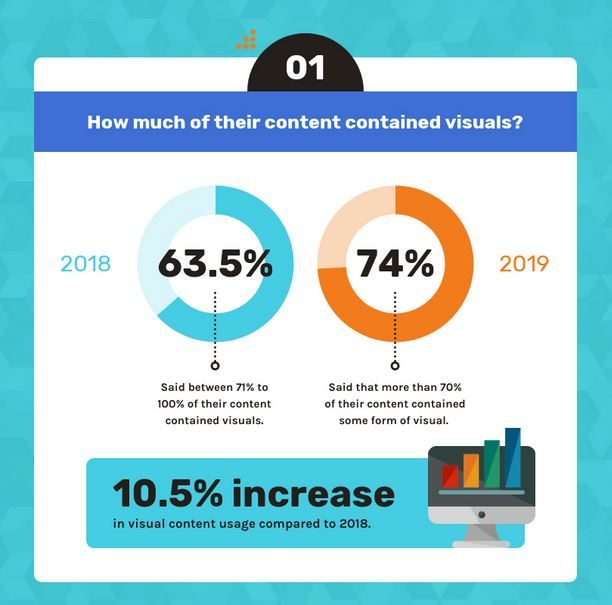
There’s a reason marketers are realizing the power of visual content: humans are visual creatures. People have different learning styles, but according to creative consultant Molly St. Louis, around 65% of us are visual learners! According to eLearning Industry, 90% of the information our brains process is visual. On top of that, we can register 36,000 visual messages per hour.
So the first learning for you on the subject of visual content? You simply have to be using it! Ignoring or neglecting your visual content strategy will turn off a large percentage of your target audience. And those who do stick around won’t take in the information as efficiently if you only provide it in text form.
Lesson 2: Variety Is Essential…
As we discussed above, there are so many different types of visual content. So don’t think you can just add a few images scattered throughout your blog posts and leave it at that! Variety is essential if you want to keep your audience’s attention and interest.
In addition, people prefer to consume content in different ways. So if you use a mixture of, for example, infographics and video, you can reach a broader audience than if you just use one or the other.
Therefore, make the effort to mix it up. If you always illustrate your posts with stock images, why not create some cool infographics? If your primary visual medium is video, include some charts and graphs to back up your points. And don’t forget the humor potential of including GIFs and memes. Giving your audience a chuckle will make them stick around.
Just like you wouldn’t only write one type of blog post or post one type of social media content, you shouldn’t limit yourself with your visual content either. Variety is essential in all types of marketing efforts, and never more so than when it comes to visual content.
Lesson 3: So Is Consistency and Brand Recognition
Though variety in your visual content is essential, you must also aim for a cohesive and recognizable brand identity. For example, you might use the same logo, a recognizable font, or a particular color scheme. If you use these across your channels, your customers will come to associate them with your brand.
Given that it takes 5-7 impressions on average for a consumer to remember a brand, we cannot overstate the importance of a consistent visual brand identity. To give you an example, I’ll show you what I do on the website for my digital marketing blog, Diggity Marketing:


Notice how I use the same shade of green and matching fonts in each graphic. Each one is different and distinctive, but they’re also tied together by a recognizable visual brand identity.
Given that one interesting study showed that color increases brand recognition by 80%, it’s essential that you have a sense of your brand’s visual identity before you launch your visual content marketing strategy.
Lesson 4: Repurposing Written Content Into Visuals
You’ve spent all that time and effort in researching, creating, and publishing your written content. So why would you want to only use it once?
Repurposing your written content and turning it into visual content is one of the best ways to get it in front of more people.
For example, let’s say you have written a blog post that’s performing well. You could record a video of the content, make an infographic, and sum up the key findings in a chart or diagram. Straight away, that one piece of content has turned into as many as four.
I write detailed and long form guides to SEO on my blog. But not everyone consumes content that way, and someone who is brand new to what I do might not want to read a 2000+ word blog post. So I repurposed some of my articles into a series of videos on my YouTube channel:

Most of the videos are short—less than 10 minutes long. But this approach gives me the opportunity to get my work in front of a new audience.
Lesson 5: You Don’t Have to Be a Graphic Designer to Make the Most of Visual Content
“But Matt!” you might be saying at this point. “I’m not a graphic designer! How can I use visual content?”
Don’t worry. You don’t need to be a design whizz to make the most of visual content. There are a few tricks you can use, and tools to help you. So where can someone without design expertise source their visuals?
If you can afford it, you can always hire a graphic designer. A good designer is worth their weight in gold and will take your content to the next level. But if you’re just starting out or operating on a limited budget, this might be out of your reach.
Using a tool like Piktochart makes it super easy to create beautiful and eye-catching visual content from infographics to charts, slide decks, and diagrams. You can drop in the ready-made assets into the versatile templates or upload your own. No design training necessary!
You can also use stock images from free sites like Pixabay or paid sites (which tend to have a better selection) like Shutterstock. I don’t love stock images by themselves, but they’re better than nothing if they are the only option available to you. Remember that you can upload stock images into tools like Piktochart and Canva and add text, logos, color, and other branded assets to them.
Lesson 6: Don’t Be Afraid of Humor
Think of some advertising campaigns you really loved. What is it about them that makes them so memorable? Chances are that in at least some cases, you enjoyed them because they made you laugh.
In 1982, researchers Madden and Weinberger demonstrated that people spent longer looking at funny magazine ads than serious ones, and were more likely to read through them. More recently, a report by Clutch showed that 53% of consumers said they enjoyed ads more if they contained humor:
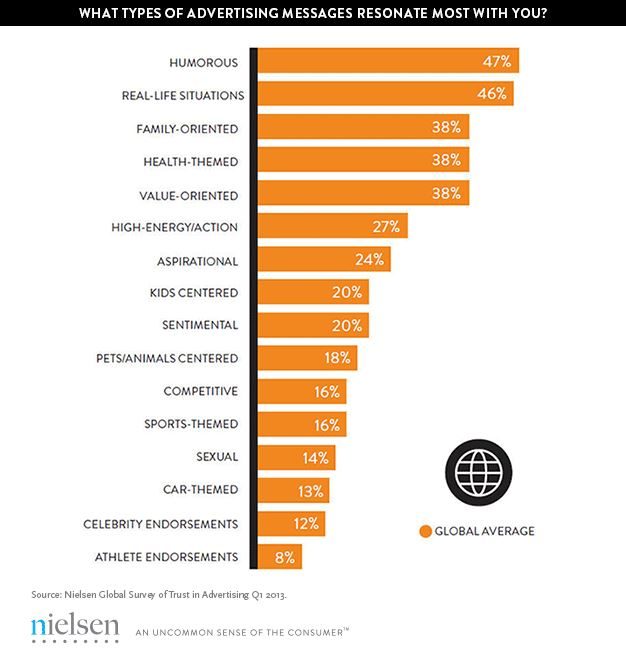
Obviously trying to be funny is not always appropriate—it depends on the subject matter and theme of your content. But more often than not, raising a giggle (or at least a smile) among your audience will serve you well.
When in doubt, memes and popular culture are a good place to start. Like this Game of Thrones meme I repurposed for a post on my blog earlier this year:
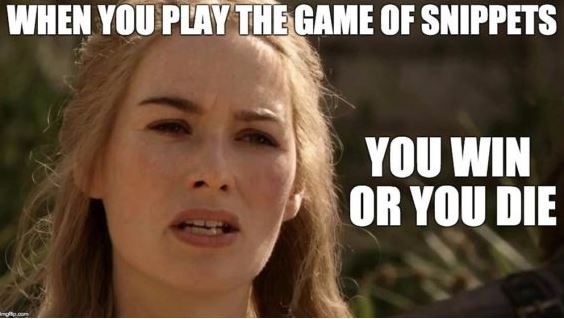
Obviously, humor is highly subjective and what you find funny won’t be funny to everyone. But if you have a strong understanding of your target audience, you’ll also have a good idea what they’re likely to find funny.
Just steer clear of any joke that is likely to be offensive. A tasteless joke landing wrong can do untold harm to your brand.
Lesson 6: Utilize Social Media to Its Fullest Potential
Visual content is vital to social media marketing success, and social media is essential to the overall success of your marketing efforts. With over 4.5 billion people now using social media worldwide, it is one of the main ways brands interact with their customers and target audience. Therefore, you simply cannot afford to ignore it or get it wrong.
An analysis of 500 million Facebook posts found that video content was shared the most often, with images coming in third place:
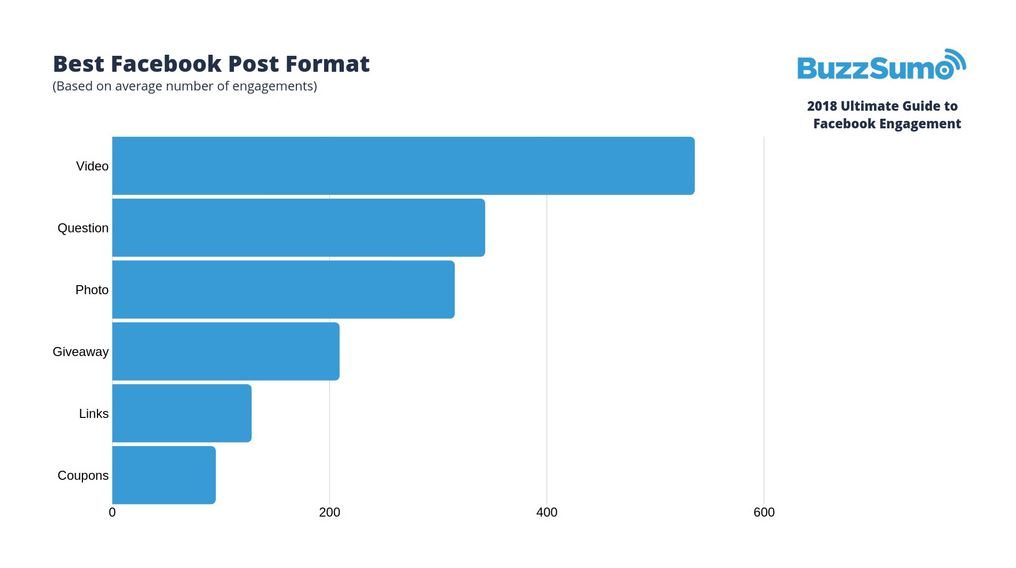
On Twitter, tweets with images are 34% more likely to be retweeted than those without images.
So how can you utilize visual content to its full potential on social media? Try these ideas:
- Use a meme, GIF, or relevant image to promote your latest blog post.
- Share a teaser video on your Facebook timeline or Instagram stories, with a link to YouTube to watch the full version.
- Condense the content of your latest blog post or video into an easily-shareable infographic for social media.
- Grab your audience’s attention with funny pictures or memes.
- Share beautiful photographs of your new product releases.
- Encourage your customers to send in images of your product in use (for example, if you run a clothing store you might ask for photographs of people wearing your garments in interesting locations.)
- Use an eye-catching graphic to advertise a sale or promotion. Here’s one I used on Twitter last week:

The beauty of social media is that, since there are so many different platforms, you have an opportunity to engage different segments of your target market using similar content. You don’t have to be on every platform, of course, but you should have a presence on the Big 4 – Twitter, Facebook, LinkedIn, and Instagram – at a minimum.
Lesson 7: Don’t Forget Video
Video content has exploded in popularity in the last few years. According to one Campaign Monitor study, 83% of participants reported that video content was increasing in importance:
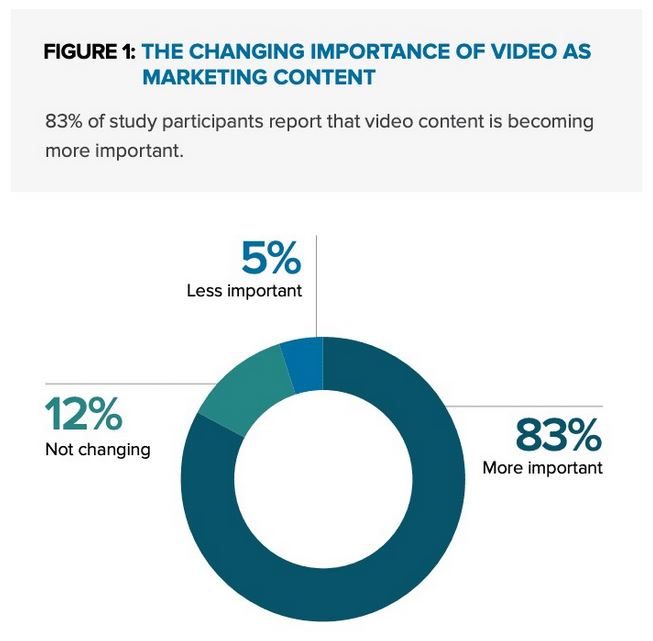
Therefore, neglecting video in your visual content marketing efforts is a big mistake.
There are a number of ways you can utilize it. Here’s what I do: besides the short SEO tips videos I mentioned above, I also do live website SEO audits and interviews with experts in my field. I live stream these directly to YouTube, and then they stay on my channel for anyone to watch:

But I don’t stop there. I also offer bonus video content as a lead-magnet on my website. I use a pop-up that invites website visitors to download the video in exchange for their email address:
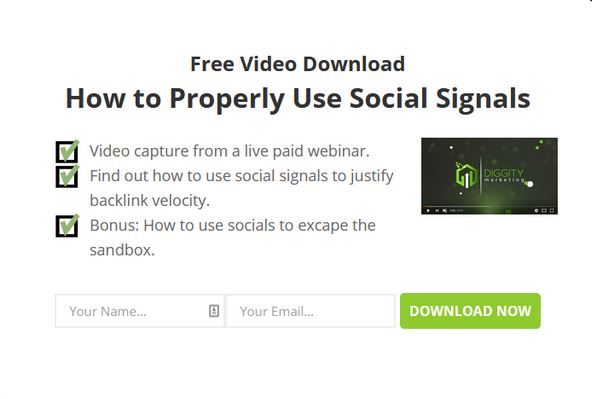
If you’re confident in front of the camera, why not record one of your blog posts as a video, or provide a short video guide to something you’re an expert in?
Camera-shy? No problem! Here are some other ideas for video content:
- A product demo walkthrough. This works particularly well for virtual products such as software.
- A short testimonial video from a happy client.
- User-generated content, such as clips from customers using your product.
- Combine a slideshow of images with text and music or sound to make a short video.
- Create a story-selling video starring your product. For a great example of story-selling in action, see this fun ad from Ben and Jerry’s starring “Leena the lactose-intolerant employee.”
While professionally scripted, filmed, and edited video content has its place, don’t shun on-the-fly video content either. Platforms like Instagram Stories and Facebook Live are fantastic for sharing short clips in an informal manner. You don’t even need a fancy video camera. Most smartphones can shoot a good quality video nowadays.
Lesson 8: Optimize Your Visual Content for SEO
It’s amazing how often my clients don’t think about optimizing their visual content for SEO, even when they’re doing a great job with their text and other elements of their websites. But visual content is hugely significant when it comes to your search engine rankings, so don’t forget to optimize it!
Here’s how you do it:
- Using images on your website automatically boosts your SEO! How cool is that? Just by using visual content, you get some extra Google points. This is because images help search engines understand what your content is about, allowing it to rank more highly in relevant searches. Images also improve the user experience and increase engagement, making readers more likely to stick around, read the content, and take the desired action.
- Use image alt text. This is a small snippet of text that describes the content of an image. Its main purposes are accessibility for visually-impaired users who utilize screen-readers and to be crawled by search engines to help determine site rankings. So use your target keywords in your alt text. Here’s an example:
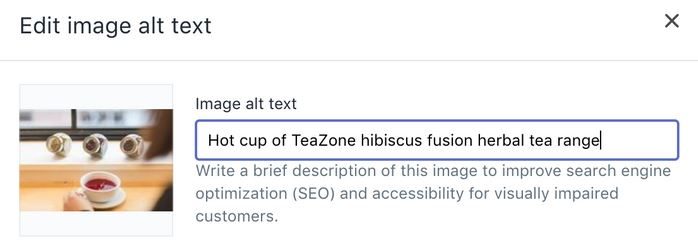
- Use unique images. The same stock photo that 1000 other sites have used will not help your rankings anywhere near as much as fresh content.
- Pick the right file format. In general, JPEG is best for images with lots of colors such as photographs, while PNG is best for simple images such as logos with only a few colors.
- Resize your images. High-resolution, large-dimension images substantially reduce your page load speed, which negatively impacts your search engine rankings. But beware: compressing your image too much can lead to poor-quality images. I recommend using a plugin like WP Smush or EWWW Image Optimizer for the best results.
- For video content, use an engaging thumbnail image, and a title and description that contain your keywords.
- Create transcripts for your videos.
SEO is a long game and you might not see results straight away. That doesn’t mean you should give up!
Lesson 9: Make Your Content Interactive
One of the best ways to keep people’s attention is to involve them directly. Therefore, consider utilizing interactive visual content where possible.
You could do a live stream on Facebook, Instagram, or YouTube, answering viewers’ questions or responding to their comments. On platforms like Instagram Stories, you can use interactive features like this-or-that polls and sliders to encourage engagement. Quizzes are a hugely popular interactive tool for bringing new leads into your sales funnel. And you can even create a customized and branded live chatbox on your website to allow customers to interact in real-time—something that makes 63% of customers more likely to return.
Since 70% of marketers reported that they find interactive content effective at engaging website visitors and customers, it’s well worth investing the time.
Wrapping Up
I hope I’ve convinced you of the importance of using visual content in your marketing strategy. The content marketing landscape is constantly changing, so it’s essential to keep your finger on the pulse and keep up with current trends.
One thing is for sure, though: visual content is not going anywhere. With increasing demands on all our time and attention, keeping your audience engaged is more challenging and more vital than ever. Making the most of visual content is one of the most effective methods in your toolkit to engage your audience, build a loyal fanbase, and grow your conversions.
So to recap the lessons I’ve shared with you today:
- A majority of people are visual learners and our brains can process images at many times the speed of text. Ignore visual content at your peril.
- Variety is the spice of life and content marketing.
- Consistency is essential. Be creative, but maintain a coherent brand identity.
- Repurpose your written content into visual formats.
- Don’t be scared if you’re not a graphic designer. Most of us aren’t. Use the tricks and tools at your disposal.
- Make ‘em laugh.
- Social media is essential, and visual content consistently performs best on social platforms.
- Don’t neglect your images and videos when it comes to SEO.
In my decade plus in this industry, I’ve seen these guidelines get results again and again. If you’re already using visual content, I encourage you to keep it up and look for ways to expand your strategy. If you’re not, then this is a great time to get started.
Good luck!


